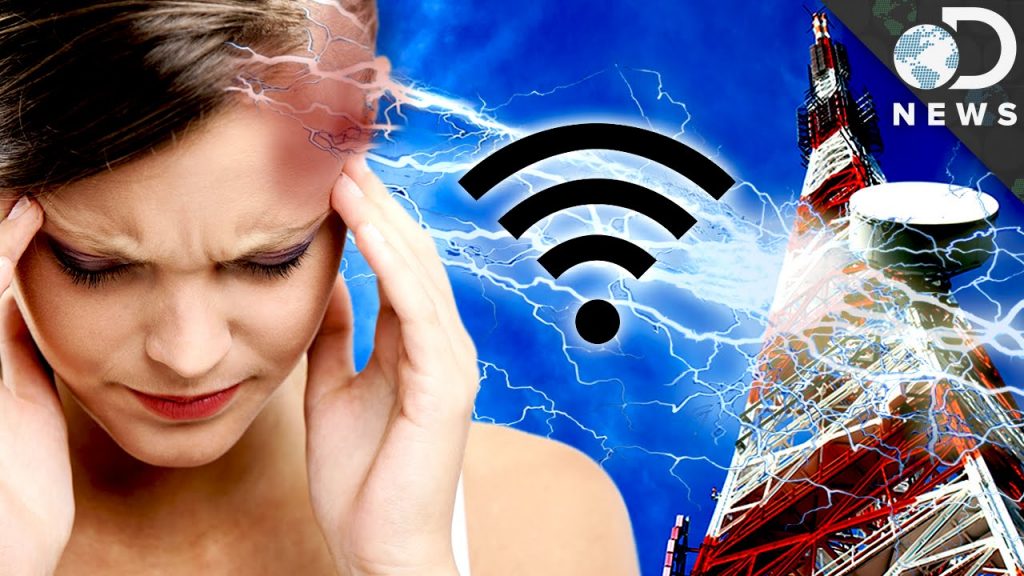WiFi and several other electromagnetic waves that travel freely in the air, were always suspected to bring some health hazards with them. Some people even believe that they might be allergic to WiFi. People who experience such allergies get headaches, dizziness and skin irritation all of a sudden. The blame is on electromagnetic fields to cause hypersensitivity and discomfort. The condition is known as electromagnetic hypersensitivity syndrome or EHS by World Health Organization.
Recently a case was reported where a 15-year-old girl from the UK committed suicide because of her condition caused by the WiFi signals. Her family told that upon exposure to WiFi signals, she felt physically sick and also suffered from blinding headaches. Her condition was so bad that she could not properly concentrate on anything.
Another survey told that people who suffer from EHS described symptoms like headaches and fatigue which appeared when the person was exposed to electromagnetic signals coming from WiFi, computer screens or cell phones. The people who suffered the situation told that as soon as they removed themselves from the source of waves, the symptoms removed.
According to the World Health Organization, EHS is defined as, “EHS is characterized by a variety of non-specific symptoms, which afflicted individuals attribute to exposure to EMF. The symptoms most commonly experienced include dermatological symptoms (redness, tingling, and burning sensations) as well as neurasthenic and vegetative symptoms (fatigue, tiredness, concentration difficulties, dizziness, nausea, heart palpitation, and digestive disturbances). The collection of symptoms is not part of any recognized syndrome.”
They further described it as resembling multiple chemical sensitivities with a range of non-specific symptoms that seem to lack any apparent toxicological or physiological basis. Dr. James Rubin, a senior lecturer in Psychology at King’s College, London, stated that those who are suffering from EHS are actually ill. He conducted research into EHS and was also the author of Bio Electro Magnetics review in 2009. Rubin said, “[But] the science suggests that it isn’t [electromagnetic signaling] that is causing the illness.” It is stated on the WHO website that EHS sufferers can have a variety of nonspecific symptoms and also the EHS is not a medical diagnosis. “There is no scientific basis to link EHS symptoms to EMF exposure”, this statement is written on the WHO website.
EHS symptoms tend to vary from person to person but they are rather general in nature. This also indicates a huge variety of actual cases. Headaches have many causal factors that include early symptoms of flu and cold or maybe because the person was not drinking enough water. Dizziness can also be caused by flu-like infections and lack of sleep. People also report that the severe symptoms of EHS should be considered a real disability. Recently a case was filed against a local private school in Massachusetts by the parents of a 12-year old child. The parents claimed that the ‘industrial capacity WiFi’ installed at the school recently has caused their son problems. The boy is facing the usual symptoms associated with EHS but also faces nose bleeds and heart palpitations due to EMF. The symptoms only showed up during the school hours. When the Wi-Fi system was evaluated it was found that the system was within the safety parameters defined by FCC and thus the case was dismissed.
A variety of studies have been done during the past years. EHS individuals were exposed to EMF signals which were similar to those which were linked to the patient’s symptoms. The aim of these tests was to formally investigate and link symptoms under the laboratory conditions. In the majority of cases, the patient with EHS was able to detect when they were exposed to EMF. Those who were not suffering from the symptoms couldn’t tell the difference when exposed to the rays. When the experiments were inducted, they were very well controlled, double-blind studies which clearly showed that the symptoms do not correlate well with EMF exposure. As a result, it was suggested that the observed symptoms can be a result of the environmental factors.
This included things like fluorescent light flicker, computer monitor’s glare and poor ergonomic design of chairs and workstations. Other factors include poor indoor air quality, workload and stress during work and home environment also contribute to the person’s health condition. In few cases, the pre-existing conditions also play a part like psychological reactions like to worry about a threat of being exposed to EMF. 46 of such studies were reviewed and published in the journal Bio Electro Magnetics and most of it agreed to the findings of WHO. The participants were unable to determine whether EMF signals were present to a statistically significant level or not.
Dr. Rubin’s review encompassed studies of the symptoms of more than 1000 people who claimed to be suffering from EHS. The review he gave concluded that “repeated experiments have been unable to replicate this phenomenon under controlled conditions.” According to the studies, it can be said that the WiFi and other EM signals cannot be blamed. Those who claimed to suffer from some form of allergic reaction to WiFi are suffering from something but whether its psychosomatic or caused by other environmental pollutants is yet to be determined. The allergies are indeed the cause just not to EM radiation.
Another factor that played a part in the case of EHS is called ‘nocebo effect’. It is a specific psychological disorder in which a person starts believing EMF can cause symptoms to trigger so much that they actually start appearing physically in the patient. This can also occur even when the exposure has not occurred yet. There is still a long way to discover whether the EHS is real or not but what many of the people are facing and suffering from is real and painful.

